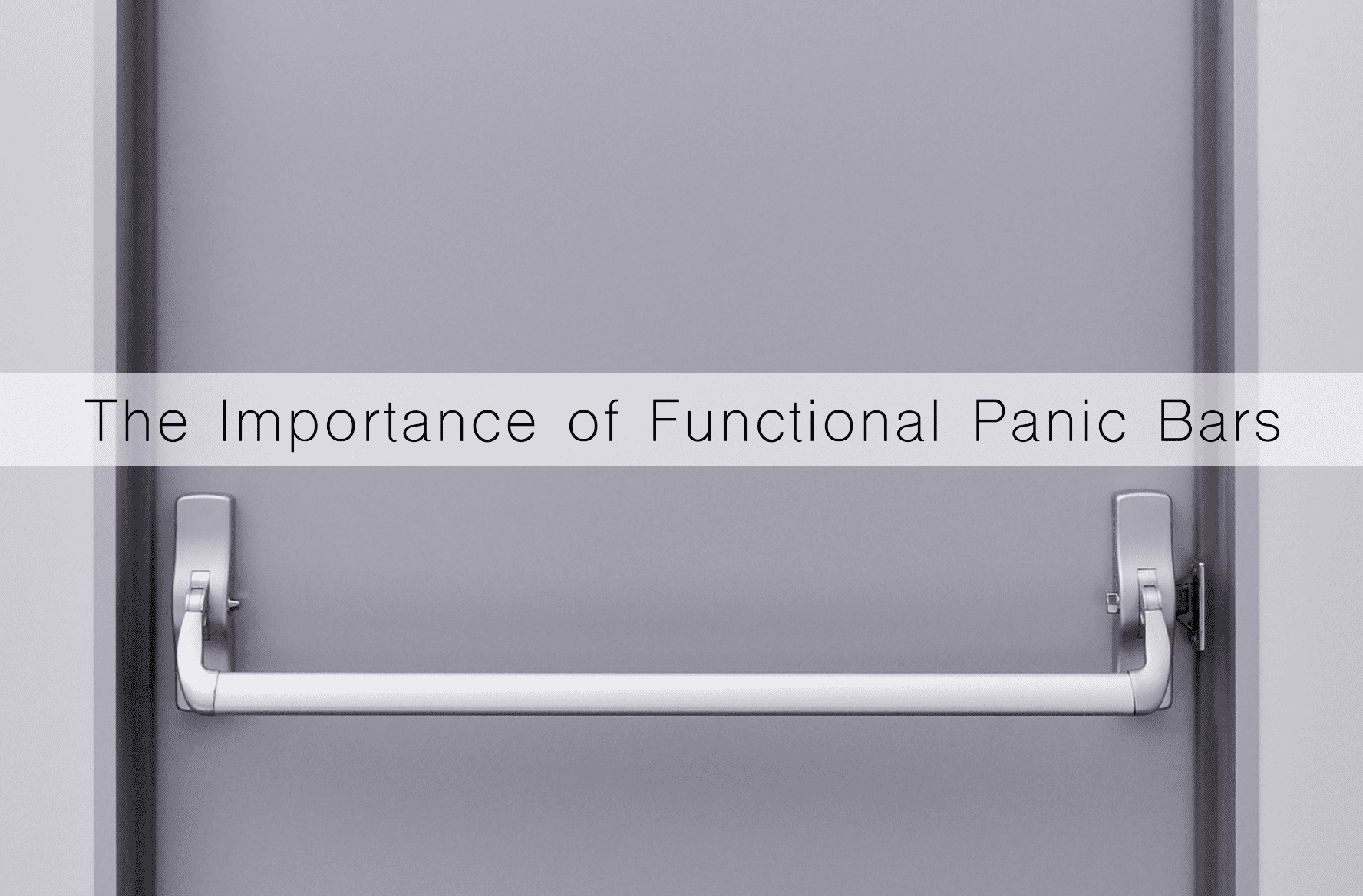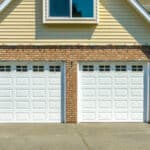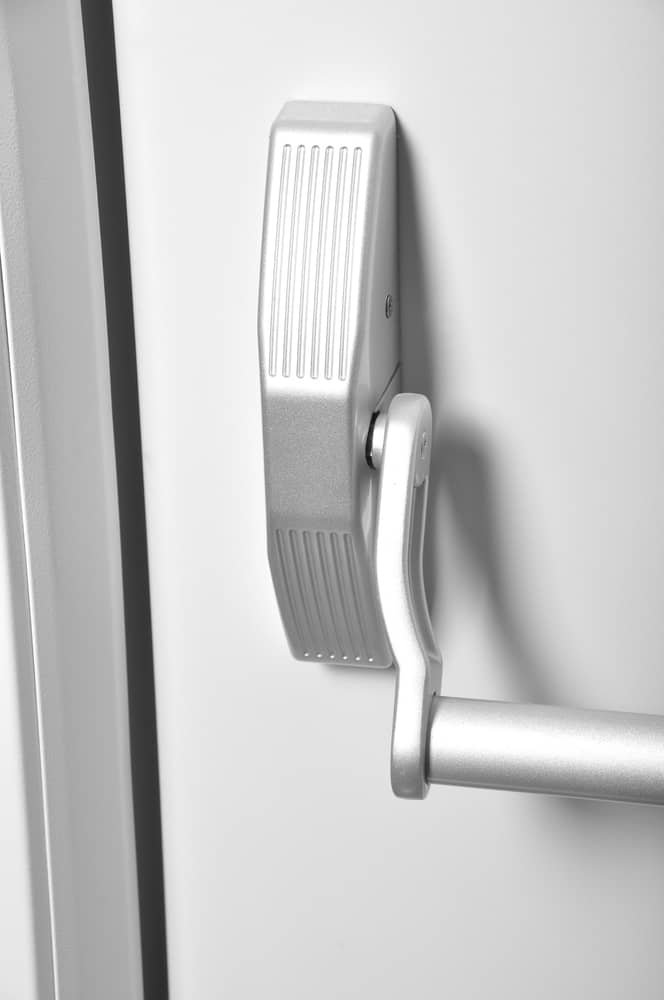There are many ways to get in and out of a building. Some methods, like turning a door handle, may take longer than you would like in the case of an emergency. The effort it takes to get through a door is rarely thought of, but there are codes in place to ensure safe exits for buildings everywhere. These codes include the use of panic bars. You may be wondering what these are, but you are more familiar with them than you know.
What Are Panic Bars?
Panic bars are the push-open spring mechanism on doors that we see in schools, gymnasiums, churches, and many other businesses and buildings. They lay horizontal against a door, and you can easily push your way out of a building. These doors also have keys that can keep the panic bar unlatched, and that allows even faster exit times.
Origins
Panic bars were first created for buildings in the early 1900s after several tragedies involving people’s inability to properly and rapidly exit buildings during emergencies. Panic bars were invented to ensure that people could get out buildings during life-threatening emergencies, such as fires.
Crowd Management
Prior to the invention of panic bars, there were cases of people being trapped inside of buildings without getting past stampedes. People crowding doors made it nearly impossible for large crowds to effectively exit a building. Not escaping a dangerous or hostile situation inside of a building is a terrifying experience.
Laws
The British government first enforced codes involving panic bars. Buildings that held a large number of people were required to install the safety device that would allow for easy and timely exits in case of an emergency. The panic bar was born, and it resolved the issue of quickly and safely exiting a building during an emergency situation.
Today
Panic bars still remain the basic solution for fast, easy and safe exits from buildings. Panic bars push open automatically, allowing for an easy and seamless exit, even when large crowds try to exit a building. You simply push the panic bar and the door unlatches, allowing you to get out of a building without much of a fuss.
Types of Panic Bars
Panic bars are everywhere, but you may not have been aware of the reasons behind them until now. These panic bars are in schools, where children can easily push their way out to play, or they can easily flee a building in the case of an emergency. Stadiums, hospitals, and other large facilities across the globe also contain panic bars, allowing easy exits for large crowds. The next time you go outside, see if you can find different types of panic bars on doors everywhere since they are the standard by which doors offer a simple way for people to exit a building.
Cylindrical Crash Bars
These are the panic bars that we see in stadiums, schools, and other large buildings. These types of bars also work well in smaller facilities. Cylindrical crash bars provide a secure lock while allowing safe exits in moments when you need to get out of a building fast. Cylindrical crash bars lock within the actual bar itself. This makes the door more secure than if the lock were outside of the bar. This inside lock feature also allows the bar to be unlatched when it is unlocked, which results in an even easier exit. The experts here at Sevan Locks and Doors can explain and demonstrate this type of door and all of its benefits.
Alarm-Activated Crash Bars
This is a type of panic bar that we see under emergency exit signs. When you push your way through an alarm-activated crash bar, an alarm will sound. The alarm also goes off if someone attempts to open the door from the outside. The alarm- activated crash bars are great for ensuring safety in your building because it alerts others to a possible emergency while allowing easy egress at the same time. Alarm-activated crash bars may also signal someone trying to break into a facility.
Important Maintenance
A panic bar is meant to ensure safety as it provides a rapid opening of doors. If a panic bar is not working properly, it can cause the opposite effect. In an emergency situation, you should not have to think twice about getting out of a building safely. Panic bars provide this peace of mind, as you are sure of a fast and easy exit.
However, it is equally important to ensure that the doors are always working properly and stay up to code. An expert locksmith in Seattle can inspect your panic bars to see if they are up to code and work to their maximum efficiency. This provides safety to all those who enter and exit your building. Panic bars make for a safer building, but more importantly, they allow anyone inside a quick way to get out of a large facility.
Thank you for reading our blog! How can we help you? Contact us today.




